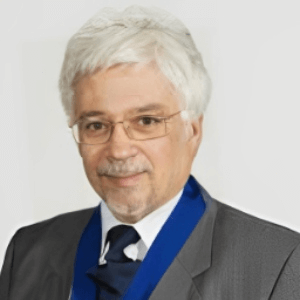Title : Prognostic indicators of spontaneous neurological recovery following Traumatic Spinal Cord Injuries and the role of the Neurologist
Abstract:
Spontaneous Neurological Recovery is very common in patients with incomplete traumatic spinal cord injuries. This is provided no further mechanical and non-mechanical damage is inflicted onto the injured cord. Currently there is great deal of emphasis on the threats of the Biomechanical Instability of the spinal axis, canal encroachment and cord compression being a source of further neurological damage or preventing neurological recovery. What is not currently highlighted is that the acutely injured Spinal Cord is also Physiologically Unstable and unable to defend itself from systemic complications such as severe hypoxia, hypotension, hypothermia, generalised sepsis and electrolyte imbalance which can equally cause neurological deterioration, delay or absence of neurological recovery if the patient is inadequately managed. These complications would not normally damage an intact spinal cord as well as from mechanical damage.
Neurological recovery has been observed to occur With Active Physiological Conservative Management (APCM) of both the injured spine and the multisystem effects of the cord damage since the 1950s. This observation is still being repeatedly confirmed for more than half a century in patients presenting early, with any long tract sparing, irrespective of the severity of the radiological presentation of the spinal injury on Xrays, CT or MR and without intervention on the spine or spinal cord
The last two decades have witnessed an aggressive promotion of early interventions, surgical and non-surgical within a window of opportunity which, following a post-hoc analysis, has been extended from 4 hours in the laboratory animal to 24 hours in humans. Assertions are increasingly being made that surgical decompression of the spinal canal within 24 hours of injury results in a better neurological outcomes than with late surgery and must therefore give better result than APCM. These claims were facilitated by a change of the established neuro-functional outcome assessment tool to a numerical tool conveying the statistical shift of patients from defined classes to new classes based on the exhibited motor power by the patient in the first 24 hours of injury. The accuracy of such an early numerical assessment and documentation of motor power in newly injured , anxious, paralysed patients, in pain, under heavy analgesic medication and sedation , with possible associated injuries has yet to be validated for its reliability as a baseline for subsequent comparison of outcomes of interventions.
The positive and negative prognostic indicators of neurological recovery, and the factors that enhance, prevent or cause neurological deterioration in patients with complete and incomplete cord damage will be discussed.
The influence of the initial force of the impact that damages the neural tissues, the severity of the cord damage and the quality of care of the injured spine and its consequent systemic effects will be discussed.
To date there is no evidence that surgical or other interventions on the injured spine and/or spinal cord add value to the neurological or other outcomes of patients with TSCI.
Further mechanical and non-mechanical damage to the injured spinal cord during the early stages of TSCI remain the main causes of neurological deterioration, delays or lack of expected recovery following TSCIs.




